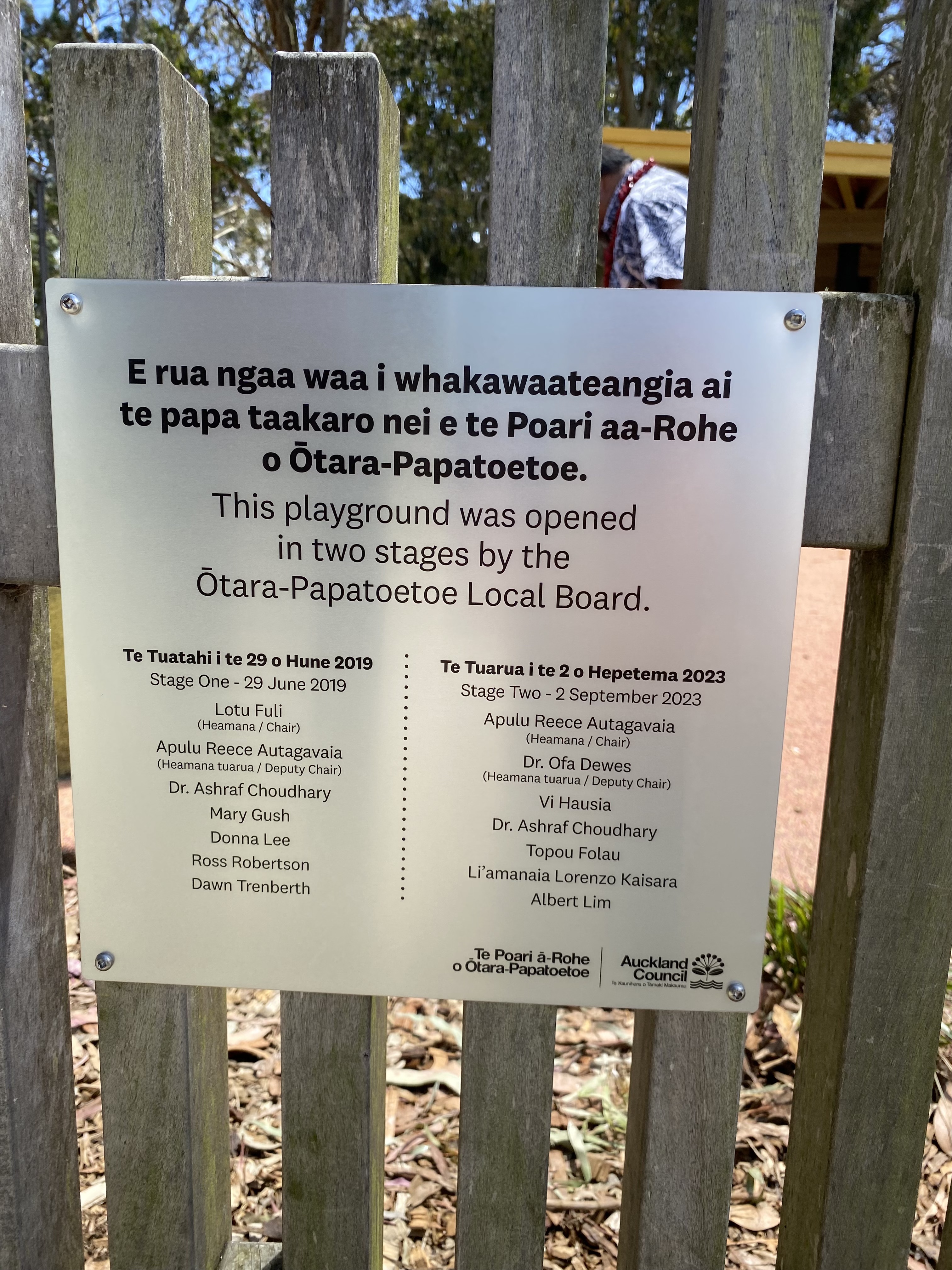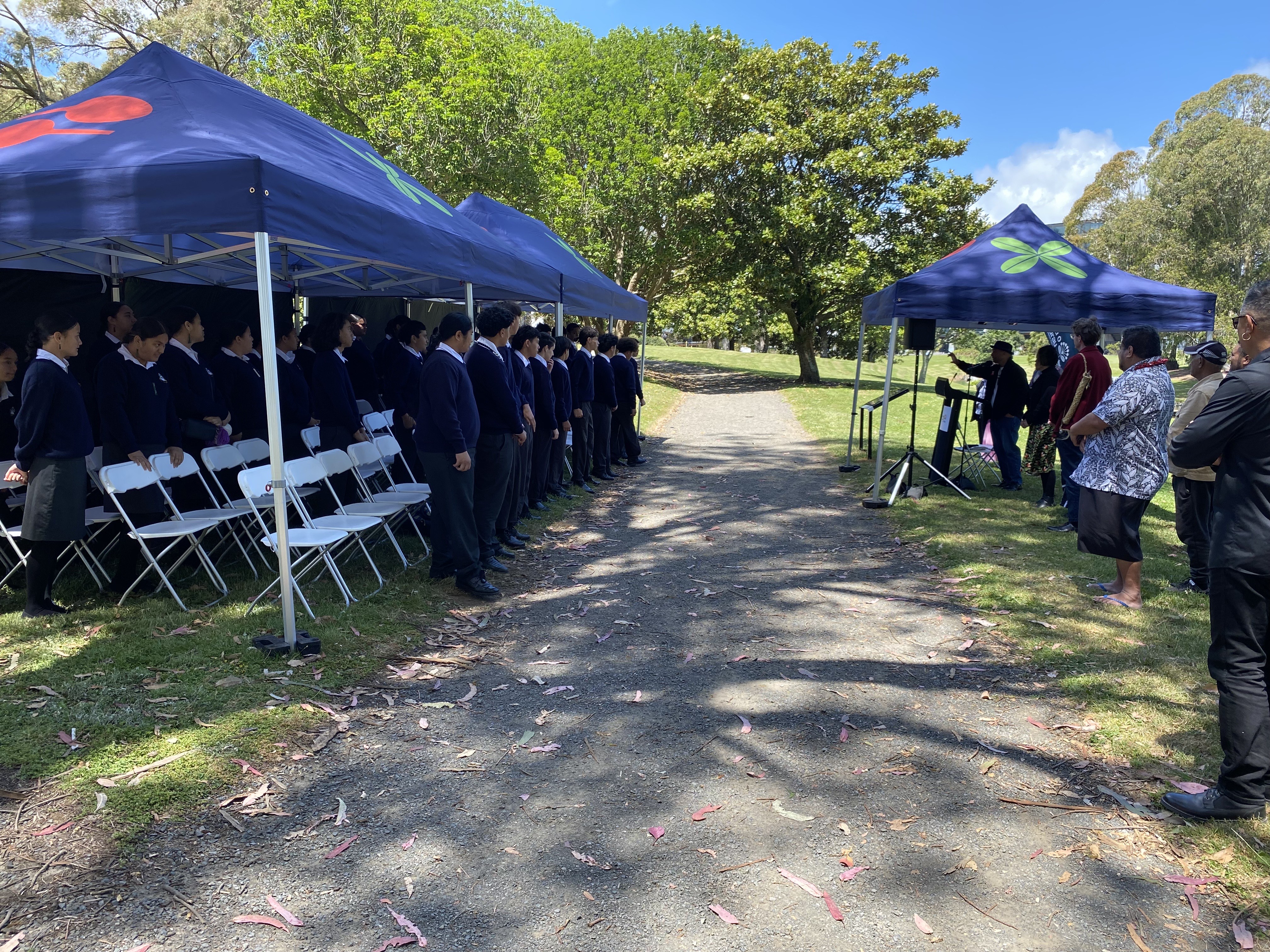The rich tapestry of life at Manu-kau Noa Iho / Hayman Park was on full display for this special occasion.
On a crisp, sun-drenched Wednesday afternoon, with the sweet melodies of manu (birds), the gentle ripples of the roto (lake), and the enchanting voices of James Cook High School filling the Manukau skies, an intimate and deeply powerful ceremony unfolded at Hayman Park / Manu-kau Noa Iho, marking a significant moment in the Ōtara-Papatoetoe area's history.
Known as the whakarewatanga ceremony, the celebration of the adoption of 21 Māori names, reconnecting the land with its ancestral heritage and reaffirming the cultural ties that bind the community to its whenua.

Whakarewatanga ceremony led by Mana Whenua.
With the presence and blessings of mana whenua Te Ākitai Waiohua, Ngāti Tamaoho and Ngaati Te Ata Waiohua, the Ōtara-Papatoetoe Local Board is delighted that the area has been enriched with Māori names and narratives, celebrating and honouring the area’s cultural heritage.
Board chair Apulu Reece Autagavaia says, “Names have power. After nearly two centuries of dispossession and disempowerment, returning the original names to the landscape is a little way of the Ōtara-Papatoetoe Local Board giving power and mana back to our tangata whenua stories and identity.”
The board invited local iwi to name 50 parks as dual names in April 2019.
Eighteen names were adopted in February 2021 and a further 21 adopted in February 2024. More about this here (refer to item 14).
The story behind the name
Manu-kau Noa Iho translates as 'it’s only just birds'.
It references a time when the Tainui waka (canoe) was portaged over land to the Manukau Harbour. They heard the tangi (cries) of a multitude of manu tai (sea birds). At first, they thought these sounds were the cries of human beings but later discovered them to be 'only just birds' - he manu kau noa iho.
The full story is displayed on signage in the park.
At the ceremony, in his kōrero, Apulu shared his personal connection to the importance of names and adds, “Manu-kau Noa Iho. It is a beautiful name that stirs up the imagination of the first time Polynesians arrived in this part of Tāmaki Makaurau. And all they heard was the sounds of seabirds. What an experience that would have been, compared to the modern concrete jungle that now exists.
As we face the environmental challenges of these modern times, Manu-kau Noa Iho, gives us a glimpse into the past, but also an aspiration of what could be in the future.”

All sites are intended for naming as dual names where the Māori name is added to the existing name, and nothing is taken away. This is part of Council’s Te Kete Rukuruku program.
Some notable names and narratives include:
-
Te Paataka Koorero o Papatoetoe / Papatoetoe War Memorial Library: Papatoetoe can be translated as ‘toetoe land’ and/ or ‘the land where toetoe grows’. Toetoe once grew prolifically in this area and is a significant resource (taonga) that was harvested and used traditionally by Māori for lining the walls and roofs of houses.
-
Te Wharau o Kohuora / Papatoetoe Town Hall: Te Wharau o Kohuora ('The shelter of Kohuora') acknowledges that the site and the wider Old Papatoetoe Town Centre areas are under the shelter and sanctuary of Kohuora. Kohuora is the ancient name for the nearby crater and refers to the 'mist that sometimes fills the crater, providing life-giving moisture.’
Three iwi provided the names and narratives for these sites - Te Ākitai Waiohua, Ngāti Tamaoho and Ngaati Te Ata Waiohua.

The ceremony

Also present were Manukau Business Association, Head of Māori outcomes for Council - Anahera Higgins, and former MP and board member Ross Robertson.
The day started with a karakia and the unveiling of Hayman Park / Manu-kau Noa Iho playground plaque followed by a walk to the location site of the ceremony.

Attendees then participated in the hīmene, enjoyed the paimārire (story behind the name), waiata and kōrero, followed by the takutaku/karakia before the unveiling of the tohu (sign).
About the Te Kete Rukuruku programme
In 2017 Auckland Council launched the Te Kete Rukuruku programme, a culture and identity programme to collect and share the stories unique to Māori in Auckland. The programme is led by iwi, in partnership with the council and its local boards.
One component of this is a naming project which will see iwi and hapu names restored. In some cases, these names existed prior to the current names.
Short narratives explaining the significance of the names are also provided by mana whenua that explain the meaning and show the connection to the place being named.
It provides a way of protecting and returning the names and the rich mana whenua stories of Auckland – some of which have been lost over many years.
Find out more about Te Kete Rukuruku.

L- James Cook High School. R - The karakia whakamutunga (closing prayer) by Mana Whenua, followed by kōrero and kai.
Stay connected
Want to stay up to date with all the latest news from your area?
Sign up for our Ōtara-Papatoetoe Local Board e-newsletter and get it delivered to your inbox each month.


